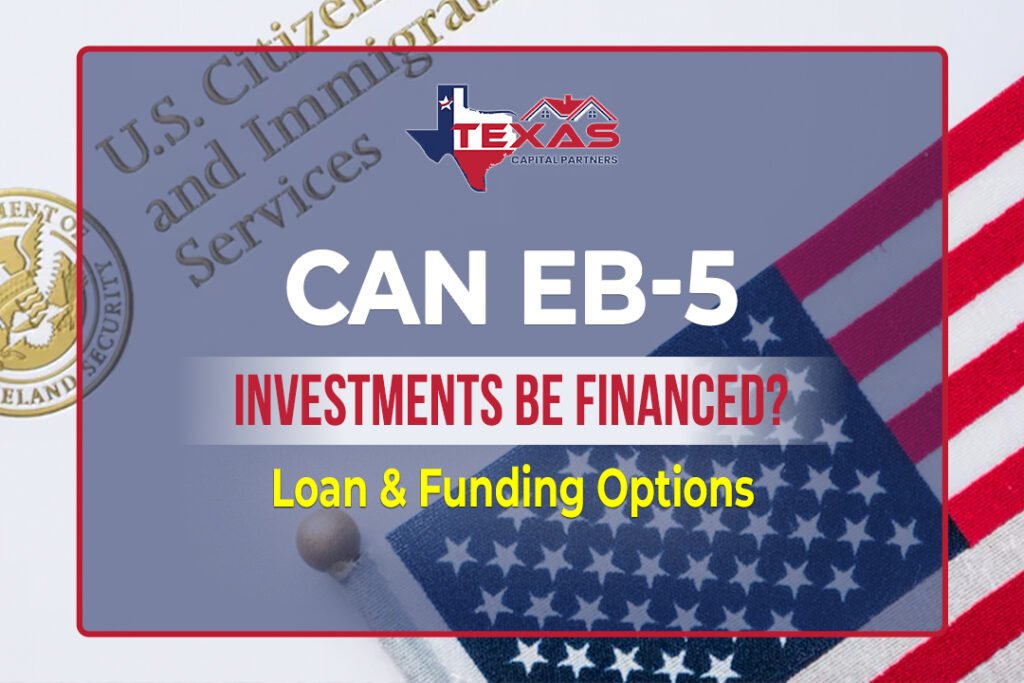The EB-5 Immigrant Investor Program offers a direct path to U.S. permanent residency through investment in job-creating enterprises. One common question among prospective investors is whether EB-5 investments can be financed using loans or other funding sources. While the answer is yes, certain conditions and regulations must be met to ensure compliance with U.S. Citizenship and Immigration Services (USCIS) requirements.
Understanding EB-5 Investment Requirements
To qualify for the EB-5 visa, an investor must make a minimum capital investment of $800,000 in a Targeted Employment Area (TEA) or $1.05 million in non-TEA projects. Additionally, the funds used for investment must be obtained lawfully and fully documented to demonstrate their legal source.
Can EB-5 Investments Be Funded with a Loan?
Yes, an EB-5 investment can be funded using a loan, but the USCIS has strict guidelines regarding loan financing:
Secured Loans Only: USCIS generally allows the use of secured loans, meaning the loan must be backed by collateral that the investor owns. Common examples include real estate, personal assets, or other tangible property.
Unsecured Loans Are Risky: If the loan is unsecured, meaning there is no specific collateral, USCIS may not consider the funds lawfully sourced. Investors should avoid relying on unsecured loans for their EB-5 capital.
Loan Proceeds Must Be Clearly Traceable: The investor must provide detailed documentation proving the lawful source of the loan funds, including bank records, loan agreements, and collateral ownership evidence.
No Redemption Agreements: Any agreement that allows the investor to withdraw funds or receive a guaranteed return is prohibited, as the investment must involve genuine financial risk.
Alternative Funding Options for EB-5 Investors:
Aside from secured loans, investors may consider these alternative funding options:
- Personal Savings & Liquid Assets
Many investors use their personal savings, which must be documented with tax records, bank statements, and proof of lawful earnings.
- Home Equity Loans Investors who own property can take out a home equity loan to finance their EB-5 investment, provided they can prove ownership and document the loan transaction.
- Business Profits or Dividends
If an investor owns a business, they may use profits, dividends, or retained earnings to fund their EB-5 investment. Corporate tax returns and financial statements will be required for verification.
- Gifts from Family Members
An investor may receive a monetary gift from a family member or relative, provided the donor provides a gift affidavit and evidence of the lawful source of funds.
- Sale of Assets
Selling personal or business assets, such as property, stocks, or other investments, is another viable option. Proper documentation of the sale, including transaction records and tax payments, is necessary.
Final Thoughts: Choosing the Right Funding Approach
While EB-5 investments can be financed, the source of funds must be clearly documented and meet USCIS requirements. Secured loans, personal savings, or legitimate asset sales are among the most accepted funding methods. To ensure compliance and avoid delays in the EB-5 petition process, investors should work with experienced EB-5 consultants, financial advisors, and immigration attorneys.
If you are considering an EB-5 investment and need guidance on funding options, Texas Capital Partners can help you navigate the process and ensure a smooth investment journey. Contact us today to explore your EB-5 financing options!



